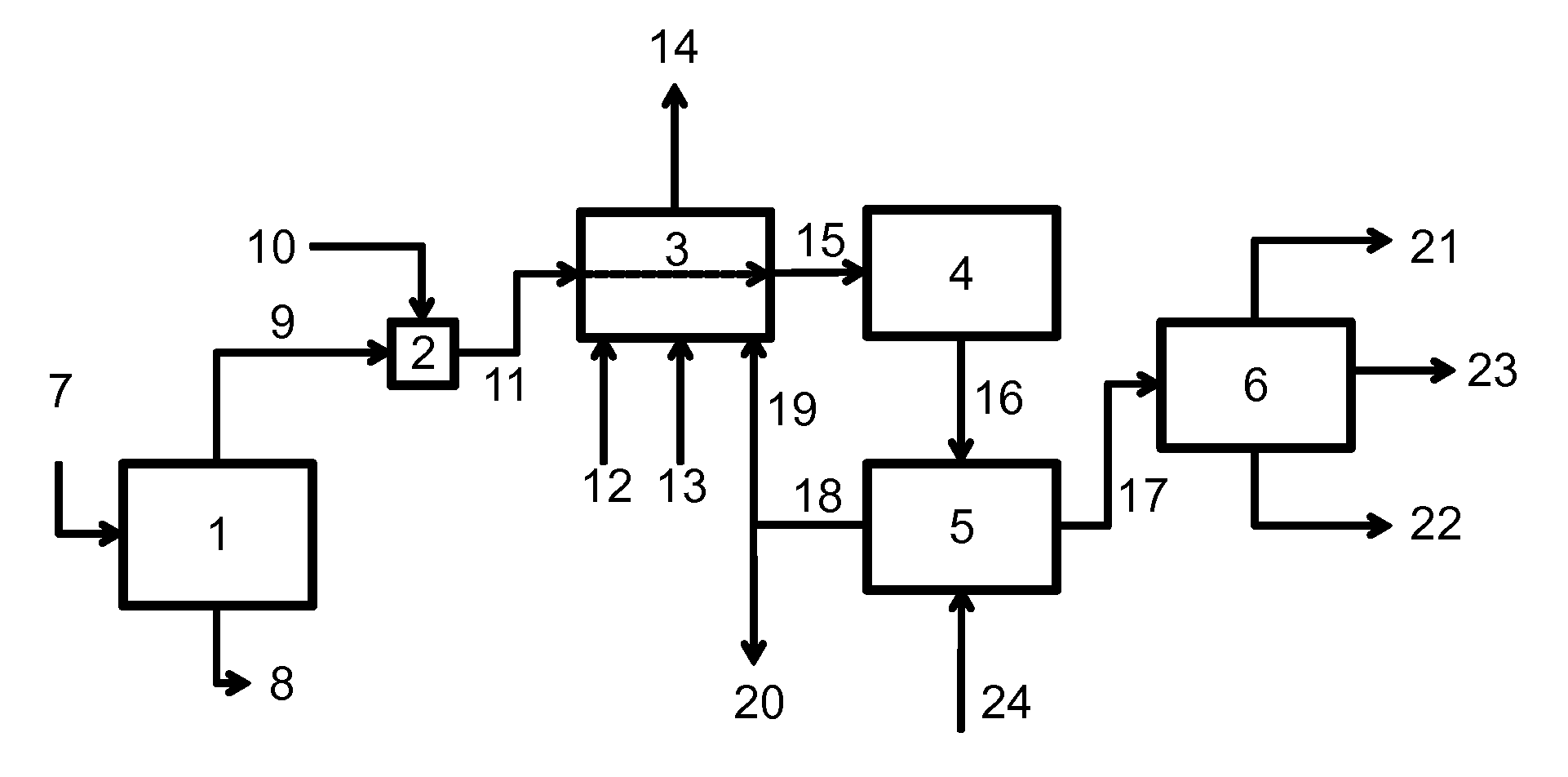Process for reducing emissions of volatile organic compounds from the ketonization of carboxylic acids
a volatile organic compound and carboxylic acid technology, applied in the field of process for reducing the emission of volatile organic compounds, can solve the problems of high cost and capital-intensive, undesirable emission of these voc's with the carbon dioxide by-product stream, and the lik
- Summary
- Abstract
- Description
- Claims
- Application Information
AI Technical Summary
Benefits of technology
Problems solved by technology
Method used
Image
Examples
example 1
Preparation of Acetone by Ketonization of Acetic Acid
[0097]Three GC methods were employed to analyze the ketonization process samples: GC method 1 used a DB-Wax (60 m×0.32 mm×1.0 um) capillary column and a thermal conductivity detector (TCD). Samples were diluted in an internal standard solution that was directly injected onto the GC column. This method provided weight percent of acetaldehyde, propionaldehyde, isobutyraldehyde, n-butyraldehyde, diethyl ether, acetone, water, isopropyl acetate, methyl ethyl ketone, isopropanol, isopropyl propionate, methyl propyl ketone, diethyl ketone, methyl isobutyl ketone, butyl acetate, mesityl oxide, dipropyl ketone, methyl amyl ketone, mesitylene, diacetone alcohol, and isophorone.
[0098]For the determination of weight percent organic acids, each sample was also analyzed by the following GC method 2 that used a DB-1 (60 m×0.32 mm×1.0 um) capillary column and a flame ionization detector (FID). The sample was first derivatized by reacting with BS...
example 2
Combustion of VOC's
[0106]Kinetic expressions were found in the literature describing the rate of combustion of VOC's, such as MEK, methane, and isobutylene, as a function of temperature under typical furnace conditions with excess oxygen present. These expressions were used to determine the temperature and residence time needed to achieve a given conversion of the VOC's of interest. All reactions were assumed to be isothermal and follow first order kinetics, such that the extent of conversion can be calculated as follows:
X=e(kT)
wherein X is the extent of reaction, k is the first order rate constant, with units of 1 / time, and T is the reaction temperature, in units of temperature, such as degrees kelvin. The results are shown in Table 3 below.
[0107]
TABLE 3Temperature-Dependent Residence TimeRequired for Given Conversion of VOCTemp,Residence Time required for given conversion, sec° C.% ConvMethanei-ButeneMEKAcetone60050%0.9210.6871.9871.38865050%0.1980.1120.3210.22670050%0.0500.0220....
example 3
Material Balance Around Direct-Fired Furnace
[0108]A computer process simulation was developed in ASPEN to model the direct-fired furnace / superheater. A feed comprising 557.7 kmol / hr of wet acid from the vaporizer, temperature of 145° C., of composition similar to the experimental feed described in Example 1 above, was fed through the superheater to produce a superheated acid stream at 425° C. The superheater was designed to supply 0.8 million J / kg of acid fed. Natural gas and containing a 33% molar excess of air required for complete combustion, were combusted in the furnace, and mixed in the post combustion zone of the furnace with a by-product carbon dioxide stream having a composition similar to that described in Table 2 and a volume commensurate with the expected conversion and selectivity of the given acid feed rate. The residence time in the post combustion zone was 0.1 second at a temperature of 700° C. A material balance around the superheater is shown in Table 4. Stream num...
PUM
| Property | Measurement | Unit |
|---|---|---|
| temperature | aaaaa | aaaaa |
| temperature | aaaaa | aaaaa |
| weight percent | aaaaa | aaaaa |
Abstract
Description
Claims
Application Information
 Login to View More
Login to View More - R&D
- Intellectual Property
- Life Sciences
- Materials
- Tech Scout
- Unparalleled Data Quality
- Higher Quality Content
- 60% Fewer Hallucinations
Browse by: Latest US Patents, China's latest patents, Technical Efficacy Thesaurus, Application Domain, Technology Topic, Popular Technical Reports.
© 2025 PatSnap. All rights reserved.Legal|Privacy policy|Modern Slavery Act Transparency Statement|Sitemap|About US| Contact US: help@patsnap.com



